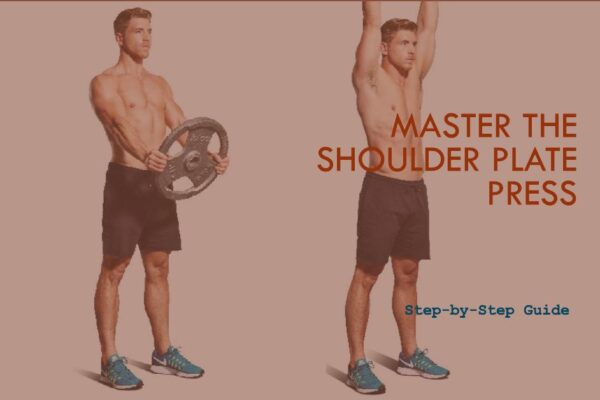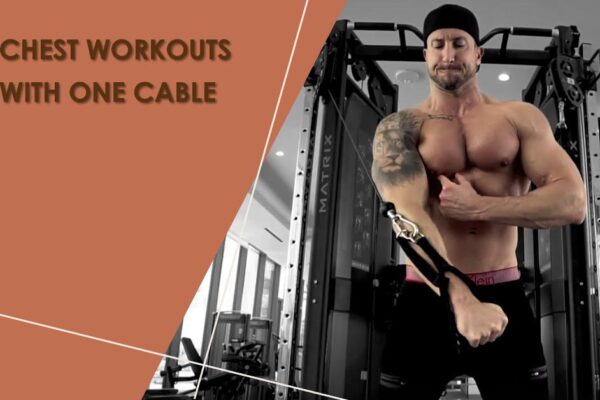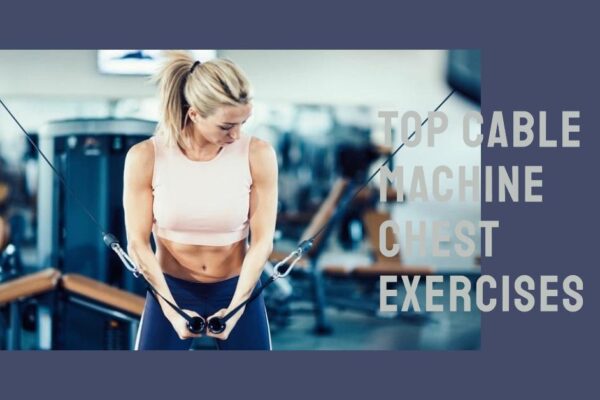Also Read: Best Hamstring Exercises with Kettlebells
What are Lat Exercises with Kettlebells?
Engaging in lat exercises proves to be a highly effective approach for enhancing muscle mass, strength, and endurance. Many individuals derive both challenge and enjoyment from these exercises.
Specifically, incorporating lat exercises with kettlebell into your routine stands out as a particularly efficient method for developing strength, muscle, and stability in the lower body. Furthermore, these exercises contribute to building core stability, improving balance, and enhancing overall agility and coordination.
The convenience of kettlebell lat exercises lies in their ability to be performed in confined spaces, making them suitable for home workouts or in the convenience of your garage. This article aims to acquaint you with a variety of kettlebell lat exercises that you can easily undertake on your own, allowing you to promptly reap the benefits of this training regimen.
How do kettlebells target Lat muscles?
Kettlebell exercises can effectively target the latissimus dorsi (lat) muscles through specific movements that engage and challenge these muscles. Here’s how kettlebell exercises target the lats:
- Range of Motion: Many kettlebell exercises involve movements that require a wide range of motion, such as rows, pullovers, and snatches. These movements actively engage the lats as they are responsible for shoulder extension and adduction, which are essential in performing these exercises.
- Stabilization: Kettlebell exercises often require stabilization from the core and other muscles surrounding the lats. This stabilization enhances the engagement of the lats as they work to support and control the movement, leading to increased muscle activation.
- Grip Variation: The grip used during kettlebell exercises can also influence lat activation. Exercises like rows or snatches performed with an overhand grip emphasize the lats more compared to an underhand grip. This variation in grip allows you to target the muscles from different angles, providing a well-rounded lat workout.
- Compound Movements: Many kettlebell exercises involve compound movements that work for multiple muscle groups simultaneously. Exercises like renegade rows or kettlebell thrusters not only target the lats but also engage other muscle groups like the shoulders, arms, and core. These compound movements help improve overall strength and muscle development in the lat area.
By incorporating a variety of kettlebell exercises that involve a range of motion, stabilization, grip variation, and compound movements, you can effectively target and strengthen your lat muscles. As always, focus on proper form and gradually increase the weight and intensity as you progress.
8 Best Lat Exercises with Kettlebells
When it comes to targeting the lat muscles with kettlebells, several exercises are highly effective. Here are some of the best lat exercises with kettlebells:
- Single Arm Bent-Over Row
- Kettlebell Pullover
- Gorilla Row
- Renegade Row
- Kettlebell Swings
- Kettlebell Halo
- Kettlebell Suitcase Row
- Kettlebell Superman pull
Incorporating these exercises into your workout routine can help you effectively target and strengthen your lat muscles using kettlebells. Remember to start with appropriate weights and maintain proper form throughout each exercise.
Also Read: 8 Best Exercises for Back Muscles to Make V-shape Back
1. Single Arm Bent-Over Row
The Single Arm Bent-Over Row is an exercise that targets the muscles in your back, specifically the latissimus dorsi (lats). It involves bending at the hips while holding a kettlebell with one hand and pulling it towards your lower ribs. This exercise helps to strengthen the back, improve posture, and enhance upper body strength.
A. Set-Up and Equipment Needed
- Grab a kettlebell of appropriate weight.
- Stand with your feet shoulder-width apart.
- Place the kettlebell on the ground between your legs.
B. Step-by-Step Guide
Here’s a detailed breakdown of how to execute the exercise correctly:
- Initial Position
- Hinge at the hips and bend your knees slightly, keeping your back straight.
- Reach down and grip the kettlebell with one hand, palm facing inwards.
- Extend your other arm out to the side for balance.
2. Execution of the Exercise:
- Engage your core and squeeze your shoulder blades together.
- Pull the kettlebell up towards your lower ribs, leading with your elbow.
- Focus on using your back muscles, specifically your latissimus dorsi (lats), to perform the movement.
- Keep your arm close to your body as you lift the kettlebell.
3. Breathing Tips
- Inhale as you lower the kettlebell back down towards the starting position.
- Exhale as you pull the kettlebell up towards your torso, squeezing your lats.
- Maintain a steady and controlled breathing pattern throughout the exercise.
Perform the desired number of reps on one side before switching to the other arm. This exercise helps to strengthen and develop the lat muscles, promoting better posture and upper body strength. Remember to choose an appropriate weight and focus on maintaining proper form throughout the movement.
Benefits of Single Arm Bent-Over Row
- Strengthens the back muscles, including the lats, rhomboids, and rear deltoids.
- Improves posture by counteracting the effects of poor posture.
- Engages and strengthens the core muscles.
- Enhances balance and coordination.
2. Kettlebell Pullover
A kettlebell pullover is an exercise that targets the muscles in the upper body, particularly the back, chest, and shoulders. It involves lying on your back while holding a kettlebell with both hands and extending it over your head, then pulling the kettlebell back up to the starting position using the muscles in your upper body. This exercise helps to strengthen and tone the muscles in the upper body, improve posture, and enhance overall upper body strength and stability.
A. Set Up & Equipment Needed:
To perform a kettlebell pullover, you will need a kettlebell of an appropriate weight for your fitness level. Here’s how to set up:
- Find a comfortable space with enough room to lie down and move freely.
- Place the kettlebell within easy reach, either beside you or just above your head.
- Lie down on a mat or bench with your knees bent and feet flat on the ground.
- Ensure that your head, neck, and shoulders are well-supported and in a stable position.
B. Step-by-step Guide
- Initial Position
- Lie down on your back with your knees bent and feet flat on the ground.
- Extend your arms overhead and grasp the kettlebell with both hands, palms facing upward.
- Hold onto the handles of the kettlebell securely.
2. Execution of the Exercise:
- Engage your core muscles and maintain a stable position throughout the exercise.
- Begin by inhaling deeply, filling your lungs with air.
- Slowly lower the kettlebell backward, keeping your arms extended and maintaining control.
- Lower the kettlebell towards the ground, ensuring that your arms stay straight and your core remains engaged.
- As you lower the kettlebell, focus on feeling a stretch in your chest and shoulders.
3. Breathing Tips
- Exhale slowly and steadily as you bring the kettlebell back to its initial position.
- Keep your breathing controlled and consistent throughout the exercise.
- Inhale deeply as you begin to lower the kettlebell, and exhale as you return it to the starting position.
Remember to start with a lighter-weight kettlebell and gradually increase the weight as you become more comfortable with the exercise. It’s essential to maintain proper form, engage your core, and control the movement to maximize the benefits of the kettlebell pullover exercise.
Benefits of Single-Leg Deadlift
- Upper Body Strength: The kettlebell pullover targets the back, chest, and shoulder muscles, helping to build strength and definition in these areas.
- Improved Posture: By engaging the muscles in the upper back and shoulders, the kettlebell pullover can help improve posture and promote proper alignment.
- Increased Core Stability: Performing the kettlebell pullover requires core engagement to maintain stability and control during the movement, leading to improved core strength.
- Shoulder Mobility: This exercise helps to enhance shoulder mobility and flexibility, promoting better range of motion and reducing the risk of injury in daily activities and workouts.
3. Gorilla Row
The Gorilla Row is an exercise that focuses on working the upper back, shoulders, and arms. It is performed using a kettlebell or dumbbell.
A. Set Up & Equipment Needed:
- You will need a kettlebell or a dumbbell of a suitable weight.
- Place the kettlebell or dumbbell on the ground in front of you.
B. Step-by-step Guide:
- Initial Position
- Stand with your feet slightly wider than shoulder-width apart.
- Bend your knees and hinge forward at the hips, keeping your back flat and core engaged.
- Reach down with one hand and grab the kettlebell or dumbbell, palm facing inward.
2. Execution of the Exercise:
- With the weight in your hand, pull your elbow up and back, driving it towards the ceiling.
- As you row, squeeze your shoulder blades together and keep your back flat.
- Lift the weight until your upper arm is parallel to the ground, or as high as you can comfortably go.
- Pause briefly at the top of the movement, feeling the contraction in your upper back muscles.
3. Breathing Tips
- Inhale as you lower the weight back down towards the ground.
- Exhale as you pull the weight up, focusing on exhaling with effort.
Remember to keep your core engaged throughout the exercise to maintain stability and prevent any excessive twisting or rounding of the back. Start with a lighter weight and gradually increase as you become more comfortable and confident with the movement.
Benefits of Gorilla Row
- Upper Back Strength: The Gorilla Row targets the muscles in the upper back, helping to build strength and improve posture.
- Arm Definition: This exercise also works the muscles in the arms, particularly the biceps and forearms, leading to improved muscle definition.
- Improved Grip Strength: Holding onto the kettlebell or dumbbell during the Gorilla Row requires grip strength, which can be beneficial for various activities that involve gripping objects.
- Core Stability: Engaging the core during the exercise helps to maintain stability and balance, contributing to overall core strength and stability.
4. Renegade Row
The Kettlebell or Dumbbell Renegade Row is a compound exercise that primarily targets the back, shoulders, and arms.
A. Set Up & Equipment Needed:
- You will need two kettlebells or dumbbells of a suitable weight.
- Start in a high plank position with your hands gripping the kettlebells, and wrists aligned with shoulders.
B. Step-by-step Guide:
- Initial Position
- Assume a high plank position with your feet shoulder-width apart and core engaged.
- Hold a kettlebell or dumbbell in each hand, palms facing inward, directly under your shoulders.
2. Execution of the Exercise:
- While maintaining a stable plank position, row one kettlebell or dumbbell up towards your side, driving your elbow back and squeezing your shoulder blade.
- Lower the kettlebell or dumbbell back down to the ground in a controlled manner.
- Repeat the rowing motion with the other arm.
- Alternate rows between each arm while keeping your core tight and hips stable.
3. Breathing Tips
- Inhale as you lower the kettlebell or dumbbell back down to the ground.
- Exhale as you row the weight up, focusing on exhaling with effort.
Benefits of Renegade Row
- Upper Body Strength: The exercise targets the muscles in the back, shoulders, and arms, helping to build overall upper body strength.
- Core Stability: Maintaining a stable plank position throughout the movement challenges the core muscles, leading to improved stability and core strength.
- Grip Strength: Holding onto the kettlebells or dumbbells during the rowing motion requires grip strength, which can benefit various activities that involve gripping objects.
- Functional Movement: The Renegade Row mimics real-life movements, promoting functional strength that can be applied to daily activities or sports performance.
5. Kettlebell Swings
Kettlebell swings are a dynamic and effective exercise that targets the posterior chain muscles while providing cardiovascular benefits.
A. Set Up & Equipment Needed:
- You will need a kettlebell of an appropriate weight.
- Stand with your feet shoulder-width apart, toes pointed slightly outward.
B. Step-by-step Guide:
- Initial Position
- Place the kettlebell on the ground in front of you.
- Hinge at the hips, bend your knees slightly, and grab the kettlebell handle with both hands.
- Maintain a neutral spine, engage your core, and retract your shoulder blades.
2. Execution of the Exercise:
- Initiate the movement by driving your hips forward and explosively swinging the kettlebell up to chest height.
- At the top of the swing, your arms should be extended, and you should be standing tall with your glutes squeezed.
- As the kettlebell descends, hinge at the hips and allow it to pass between your legs.
- Maintain control and a stable core throughout the movement.
3. Breathing Tips
- Inhale as you hinge at the hips and swing the kettlebell back between your legs.
- Exhale forcefully as you drive your hips forward and swing the kettlebell up.
Please note that it’s important to learn proper form and technique for kettlebell swings to ensure safety and effectiveness.
Benefits of Kettlebell Swings
- Full-Body Workout: Kettlebell swings engage multiple muscle groups, including the glutes, hamstrings, quads, core, and shoulders, providing a comprehensive full-body workout.
- Increased Power and Explosiveness: The explosive hip thrust and movement pattern involved in kettlebell swings help develop power and improve athletic performance.
- Cardiovascular Conditioning: The dynamic nature of kettlebell swings elevates heart rate and provides cardiovascular benefits, making them an excellent exercise for conditioning and fat burning.
- Improved Posture and Body Mechanics: Performing kettlebell swings strengthens the posterior chain muscles, including the lower back and glutes, which can contribute to better posture and overall body mechanics.
6. Kettlebell Halo
The Kettlebell Halo is a popular exercise that focuses on improving shoulder mobility and strength
A. Set Up & Equipment Needed:
- You will need a kettlebell of an appropriate weight.
- Stand with your feet shoulder-width apart, toes pointed slightly outward.
B. Step-by-step Guide:
- Initial Position
- Hold the kettlebell by the horns (the sides of the handle) with both hands.
- Bring the kettlebell up to chest height, holding it close to your body.
- Stand tall with your shoulders relaxed, core engaged, and feet firmly planted.
2. Execution of the Exercise:
- Begin the movement by rotating the kettlebell around your head in a circular motion.
- Keep your wrists straight and maintain control throughout the entire movement.
- Complete several rotations in one direction and then switch to the opposite direction.
- Focus on maintaining a smooth and controlled motion throughout the exercise.
3. Breathing Tips
- Inhale as you start the rotation and bring the kettlebell around your head.
- Exhale as you complete the rotation and return to the starting position.
Benefits of Kettlebell Halo
- Improved Shoulder Mobility: The Kettlebell Halo helps increase the range of motion and reduce tension in the shoulder girdles, promoting better shoulder mobility.
- Strengthened Shoulder and Upper Back Muscles: This exercise targets and strengthens the muscles in the shoulders, upper back, and core, helping to improve overall upper body strength.
- Enhanced Posture and Stability: Performing the Kettlebell Halo requires stability and proper posture, which can translate to improved posture and stability in daily activities.
- Warm-Up for Shoulder Workouts: The Kettlebell Halo serves as an effective warm-up exercise, preparing the shoulders for more intense workouts and reducing the risk of injury.
7. Kettlebell Suitcase Row
The Kettlebell Suitcase Row is an exercise that targets the back, shoulders, and arms while also engaging the core muscles.
A. Set Up & Equipment Needed:
- You will need a kettlebell of a suitable weight.
- Stand with your feet shoulder-width apart, toes pointed slightly outward.
B. Step-by-step Guide:
- Initial Position
- Place a kettlebell on the ground by your side.
- Stand next to the kettlebell with your feet hip-width apart and slightly bend your knees.
- Hinge at the hips to reach down and grip the kettlebell handle with one hand, palm facing inwards.
2. Execution of the Exercise:
- Maintain a neutral spine, engage your core, and retract your shoulder blades.
- Hinge forward slightly at the hips and pull the kettlebell up towards your ribcage, driving your elbow back and squeezing your shoulder blade.
- Lower the kettlebell back down to the starting position in a controlled manner.
- Repeat the rowing motion for the desired number of reps on one side before switching to the other hand.
3. Breathing Tips
- Inhale as you lower the kettlebell down towards the ground.
- Exhale as you row the weight up, focusing on exhaling with effort.
Remember to keep your back straight throughout the movement and move your hips back as you lower your torso. The movement should come from the hips, not the lower back.
Benefits of Suitcase Row
- Back and Arm Strength: The exercise targets the muscles in the back, shoulders, and arms, helping to build overall upper body strength.
- Core Engagement: Maintaining stability and balance during the rowing motion engages the core muscles, leading to improved core strength and stability.
- Unilateral Training: By working one side at a time, the Kettlebell Suitcase Row helps identify and correct any strength imbalances between the left and right sides of the body.
- Functional Movement: This exercise mimics real-life movements, promoting functional strength that can be applied to activities requiring lifting and carrying objects.
8. Kettlebell Superman pull
The Kettlebell Superman Pull exercise is a bodyweight exercise that targets the muscles in the back.
A. Set Up & Equipment Needed:
- Stand with your feet shoulder-width apart.
- Choose a kettlebell that suits your strength and fitness level.
B. Step-by-step Guide:
- Initial Position
- Hold the kettlebell with both hands in front of your body, palms facing down.
- Align your feet with your shoulders, keeping a slight bend in your knees.
- Engage your core muscles and maintain a neutral spine.
2. Execution of the Exercise:
- Begin by hinging at your hips, pushing them back while maintaining a straight back.
- Lower your torso towards the ground, allowing the kettlebell to hang naturally in front of you.
- Simultaneously, extend one arm forward while lifting the opposite leg behind you.
- Keep your gaze forward and maintain a strong, stable posture throughout the movement.
- Hold this position for a moment, focusing on engaging your back muscles.
3. Breathing Tips
- Inhale as you lower your torso and extend your arm and leg.
- Exhale as you return to the starting position and prepare for the next repetition.
Remember to switch sides and alternate arms and legs for each repetition to work both sides of your body evenly.
Benefits of Kettlebell Superman Pull
- Engages and strengthens the muscles in your back, including the latissimus dorsi (lats) and erector spinae.
- Improves stability and balance.
- Enhances posture and spinal alignment.
- Works for multiple muscle groups simultaneously for a more efficient workout.
Common Mistakes to Avoid
When performing lat exercises with a kettlebell, it’s important to avoid some common mistakes to ensure proper form and prevent injuries. Here are some common mistakes to avoid:
- Squatting Instead of Hip Hinging: One common mistake is relying on your legs and squatting instead of properly engaging your hips. Remember to initiate the movement from the hips, not the knees.
- Using Shoulder Strength: Another mistake is relying too much on the shoulders to perform the exercise. Lat exercises with a kettlebell should primarily target the latissimus dorsi muscles in the back. Focus on pulling with the back muscles rather than using excessive shoulder strength.
- Arching the Lower Back: It’s important to maintain a neutral spine throughout the exercise. Avoid arching the lower back excessively, as this can strain the back and lead to discomfort or injury. Engage your core and keep a straight back.
- Neglecting Proper Breathing: Breathing plays a crucial role in maintaining stability and control during kettlebell exercises. Avoid holding your breath and instead, remember to exhale during the exertion phase of the exercise and inhale during the relaxation phase.
Remember, it’s always recommended to seek guidance from a qualified fitness professional or trainer to ensure correct form and technique when performing any exercise with a kettlebell.
Preparing for Your Kettlebell Workout
Preparing for your kettlebell workout is just as crucial as the workout itself. Proper preparation not only enhances your workout performance but also reduces the risk of injury.
Importance of Warm-Up Routines
- A good warm-up routine prepares your body for the strenuous activity ahead. It increases your heart rate, warms up your muscles, and enhances joint flexibility. This is especially important when using kettlebells as they often involve dynamic and explosive movements.
- Incorporate exercises that mimic your workout movements.
Safety Measures and Precautions When Using Kettlebells
Kettlebells, while effective, can pose a risk if not used correctly. Here are some safety measures to keep in mind:
- Proper Form: Always prioritize maintaining proper form over lifting heavier weights. Incorrect forms can lead to injuries.
- Suitable Weight: Start with a weight you can handle comfortably. Gradually increase as your strength improves.
- Grip: Ensure your grip is firm but not overly tight to avoid unnecessary strain.
- Space: Ensure you have enough space around you to perform your exercises without hitting anything.
- Footwear: Wear flat-soled shoes for stability.
- Rest: Don’t forget to rest between sets to allow your body to recover.
Proper preparation through warm-up and safety precautions are key to a successful and safe kettlebell workout.
Frequent Question Answers
By addressing the following frequently asked questions, we hope to provide clarity and guidance on incorporating the Lat Exercises with Kettlebells in your fitness routine. Remember to listen to your body, start at an appropriate level, and gradually progress for optimal results.
| Question | Answer |
|---|---|
| What exercise works the lats the most? | Exercises like pull-ups, lat pulldowns, bent-over rows, T-bar rows, and kettlebell rows are some of the exercises that target the latissimus dorsi muscles (lats) effectively. |
| How to do back exercises with a kettlebell? | Some effective back exercises with a kettlebell include kettlebell rows, single-arm kettlebell swings, kettlebell pull-ups, and renegade rows. |
| Do kettlebells build back? | Yes, kettlebells can help build back muscles when incorporated into a well-rounded strength training routine. The various exercises performed with kettlebells engage and strengthen the back muscles. |
| Is kettlebell good for back fat? | Kettlebell exercises can contribute to overall fat loss, including reducing back fat. However, spot reduction is not possible, so a combination of a healthy diet and regular exercise is essential for fat loss. |
Conclusion
Lat exercises with kettlebells are highly effective for targeting and sculpting the latissimus dorsi muscles, as well as the muscles of the upper back and shoulders.
Incorporating exercises like the kettlebell single-arm row can help strengthen and chisel your back. Kettlebell training has shown promising results in stimulating cardiorespiratory and metabolic responses, improving muscle strength, and reducing pain in the neck, shoulders, and lower back.
Additionally, kettlebell exercises focus on movement patterns rather than isolated muscle groups, offering functional benefits for overall strength and mobility. So, if you’re looking to enhance your back health and achieve a strong and defined back, incorporating kettlebell lat exercises into your fitness routine can be a worthwhile choice.
Sources
- Great Accessory Kettlebell Exercise for Your Lats – Source: USA Iron
- The 5 Kettlebell Lat Exercises To Add To Your Upper-body Workouts – Source: Programme
- 5 Kettlebell Lat Exercises For Muscle and Strength – Source: AMM Fitness
- 10 Kettlebell Back Exercises plus 3 Back Workouts – Source: Kettlebells Workouts
- 6 Best Kettlebell Lat Exercises For Stronger Back – Source: The Fitness Phantom






Leave a Reply